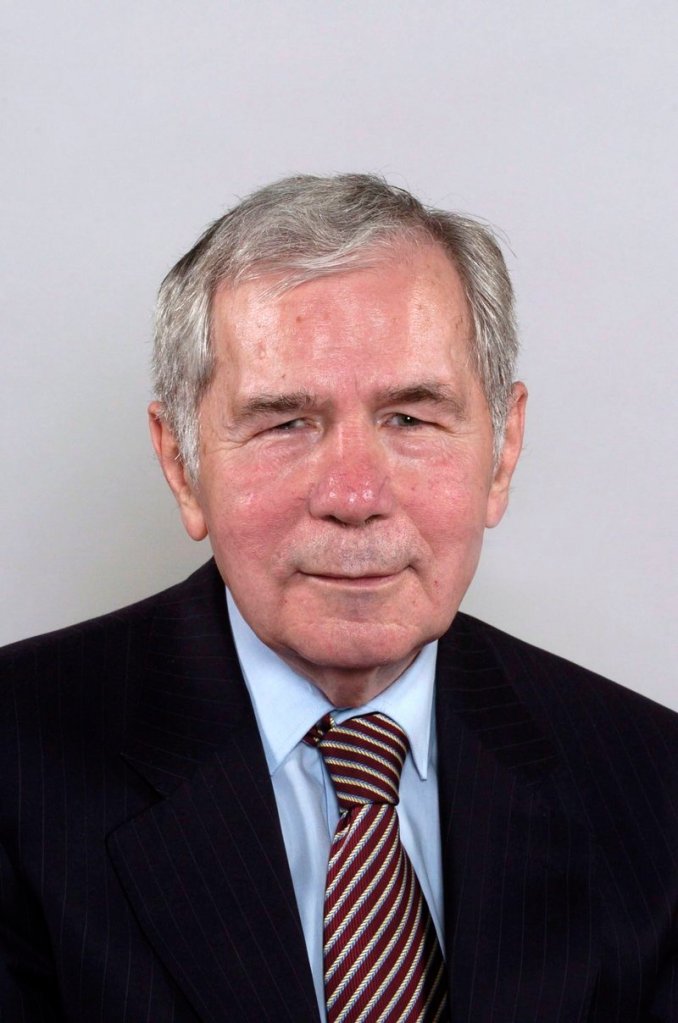BUDAPEST, Hungary – Gyula Horn, a former Hungarian prime minister who helped trigger events that led to the fall of the Berlin Wall when he symbolically cut the Iron Curtain in 1989, has died. He was 80.
Horn, who was the communist regime’s last foreign minister and later embraced free-market policies including the sale of state assets to foreign investors as premier from 1994 to 1998, died at a hospital in Budapest after a prolonged illness, the government said on its website Wednesday.
Horn’s journey took him from a young communist militant who aided Soviet troops in crushing Hungary’s uprising in 1956 to being a top diplomat who helped usher the country out of Moscow’s sphere of influence and on a path to membership in the European Union and NATO.
His defining moment came on June 27, 1989, when he joined Austrian Foreign Minister Alois Mock in cutting the fence separating the two countries, presaging the end of the Cold War.
“Horn was one of the most well-known and well-respected Hungarian politicians of the past several decades,” Laszlo Kovacs, who served as Horn’s foreign minister between 1994 and 1998, said Wednesday in a telephone interview. “Horn was a great proponent of ending communism and of tearing down the Iron Curtain, even if he wasn’t the one who made the ultimate decisions.”
The cutting ceremony, captured by television cameras, prompted tens of thousands of East Germans to go to Hungary in the hope of crossing over to Austria and then joining relatives in West Germany, on the other side of the Berlin Wall.
Lost in the symbolism of the event was the fact that the ministers actually cut the only remaining section of the Iron Curtain on the border as a decision had already been made and carried out to disassemble the physical barrier. The images were also misleading because no official decision had been made by Hungary to open its western border.
“They actually had to rebuild the fence on a 200-meter section so that they’d have something to cut through,” Miklos Nemeth, Hungary’s prime minister at the time, said in a 2009 interview with Naplo Online. “The only significance of that was that we could further test the tolerance” of the Soviets.
It worked. The first East German refugees crossed into Austria from Hungary on Aug. 19, 1989, during a civic gathering on the border that came to be known as the Pan-European Picnic. Tens of thousands followed after Sept. 10, 1989, when Horn announced on the evening news that Hungary would officially open its border the following day. The Berlin Wall came down two months later.
Horn “cut open the Iron Curtain that had been dividing Europe for 40 years,” German Foreign Minister Guido Westerwelle said in a statement Wednesday. “When he a short time later announced that thousands of citizens of the former East Germany would be allowed to leave Hungary for the West, he ensured his place in the history books.”
After Hungary’s transition to democracy, Horn helped lead the Socialist Party, the successor to the communists, to power for the first time after the transition to democracy in 1994.
As premier, Horn sold state companies, devalued the forint, restricted imports and lured foreign investment, boosting growth and winning approval from business executives while alienating voters jolted by the vanishing social safety net they had grown accustomed to during four decades of communist rule.
Copy the Story Link
Send questions/comments to the editors.



Success. Please wait for the page to reload. If the page does not reload within 5 seconds, please refresh the page.
Enter your email and password to access comments.
Hi, to comment on stories you must . This profile is in addition to your subscription and website login.
Already have a commenting profile? .
Invalid username/password.
Please check your email to confirm and complete your registration.
Only subscribers are eligible to post comments. Please subscribe or login first for digital access. Here’s why.
Use the form below to reset your password. When you've submitted your account email, we will send an email with a reset code.